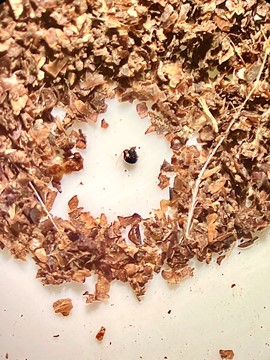Purpose
With high input costs in 2022, many farmers are looking for affordable sources of nutrients. Poultry litter is in high abundance in areas of intense poultry production, such as North Carolina. However, a common concern for farmers is whether poultry litter will carry weed seed onto their farms. With the need to better distribute nutrients throughout these areas, the transport of poultry litter is necessary. Overcoming the concern about weed seeds is critical to improve these nutrient imbalances. Therefore, a germination study was conducted on 61 random poultry litters collected across North Carolina to determine the presence of viable weed seeds.
What Did We Do?
A series of 61 poultry litters were submitted to NC State University for testing, collected from industry representatives and Extension Agents across the state. Poultry litters were diluted with potting media to allow for germination of any existing weed seeds at a 9:1 (potting media:litter) ratio on a dry weight basis. Germination studies were then conducted using 20 g of the potting media-litter mix, replicated 5 times. Positive controls included potting media alone, and potting media mixed with poultry litter to verify there was no inhibitory effect of the poultry litter on germination. Both positive controls were spiked with one of three weed species at varying rates: 50 mustard, 50 rye, or 30 sicklepod. Additionally, three subsamples (20 g) of 10 of the poultry litters were wet sieved using three sieves with 2.8-, 1.0-, and 0.4-mm mesh sizes and dried at 35 °C. Seeds were counted under a dissecting microscope, and when located, seeds were removed and tested for viability using the imbibed seed crush test as described by Borza et al. (2007).
What Have We Learned?
 Germination studies suggest small numbers of viable weed seeds, as only one seed germinated from unspiked samples. However, total weed counts suggest there can be high total seed numbers in the litters, with an average seed content of 1.17 seeds/100-g. Additionally, approximately 15% of the seeds collected were viable.
Germination studies suggest small numbers of viable weed seeds, as only one seed germinated from unspiked samples. However, total weed counts suggest there can be high total seed numbers in the litters, with an average seed content of 1.17 seeds/100-g. Additionally, approximately 15% of the seeds collected were viable.
Future Plans
We intend to continue researching this topic and hope to further understand the impact of stockpiling, litter management, and handling on viable weed seeds in litter sources.
Authors
Stephanie B. Kulesza, Nutrient Management and Animal Waste Specialist, NC State University
Corresponding author email address
Sbkulesz@ncsu.edu
Additional authors
Ramon Leon, Weed Biology and Ecology Specialist, NC State University
Miguel Castillo, Forage Specialist, NC State University
Stephanie Sosinski, Forage Lab Technician, NC State University
The authors are solely responsible for the content of these proceedings. The technical information does not necessarily reflect the official position of the sponsoring agencies or institutions represented by planning committee members, and inclusion and distribution herein does not constitute an endorsement of views expressed by the same. Printed materials included herein are not refereed publications. Citations should appear as follows. EXAMPLE: Authors. 2022. Title of presentation. Waste to Worth. Oregon, OH. April 18-22, 2022. URL of this page. Accessed on: today’s date.

